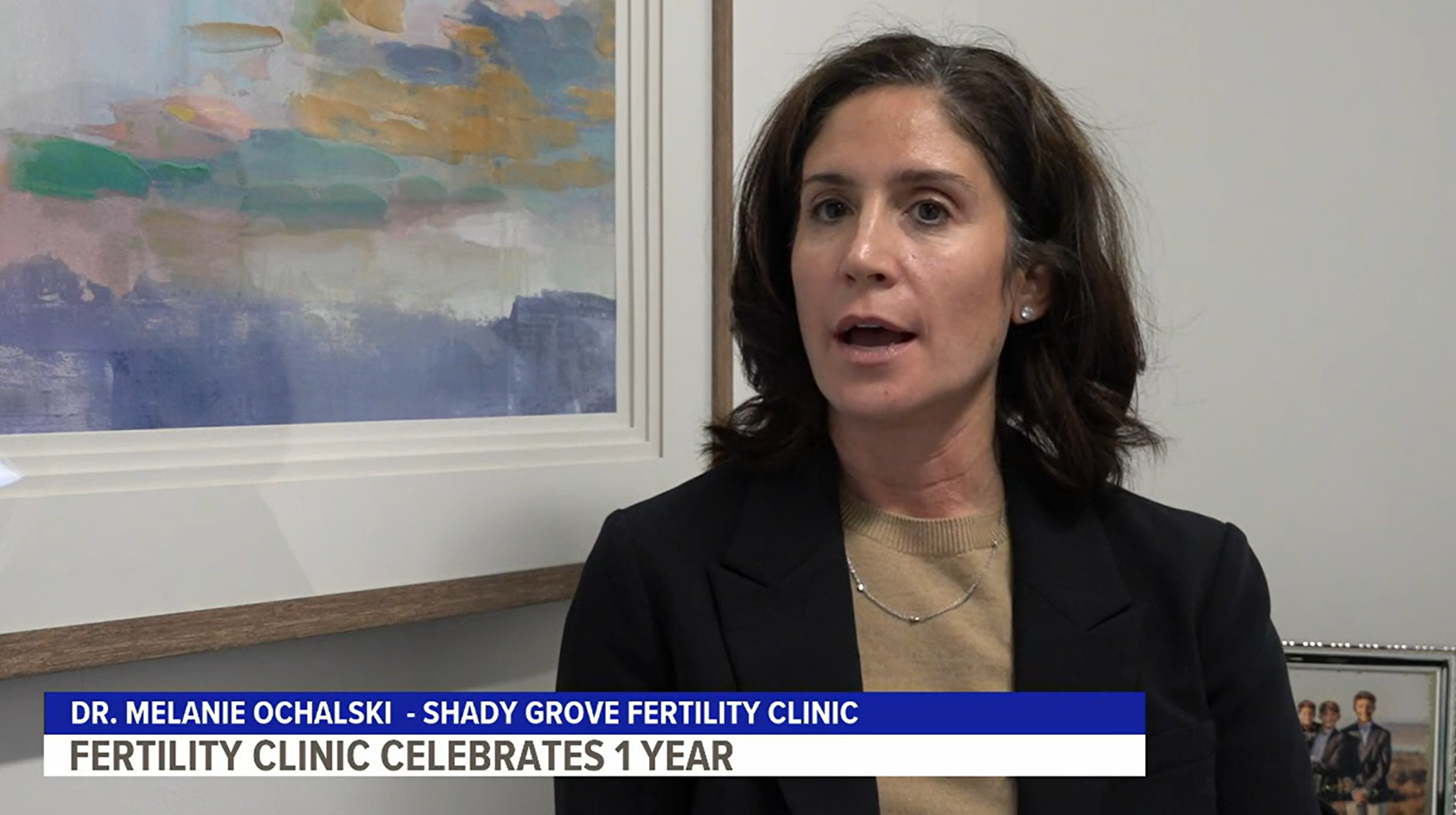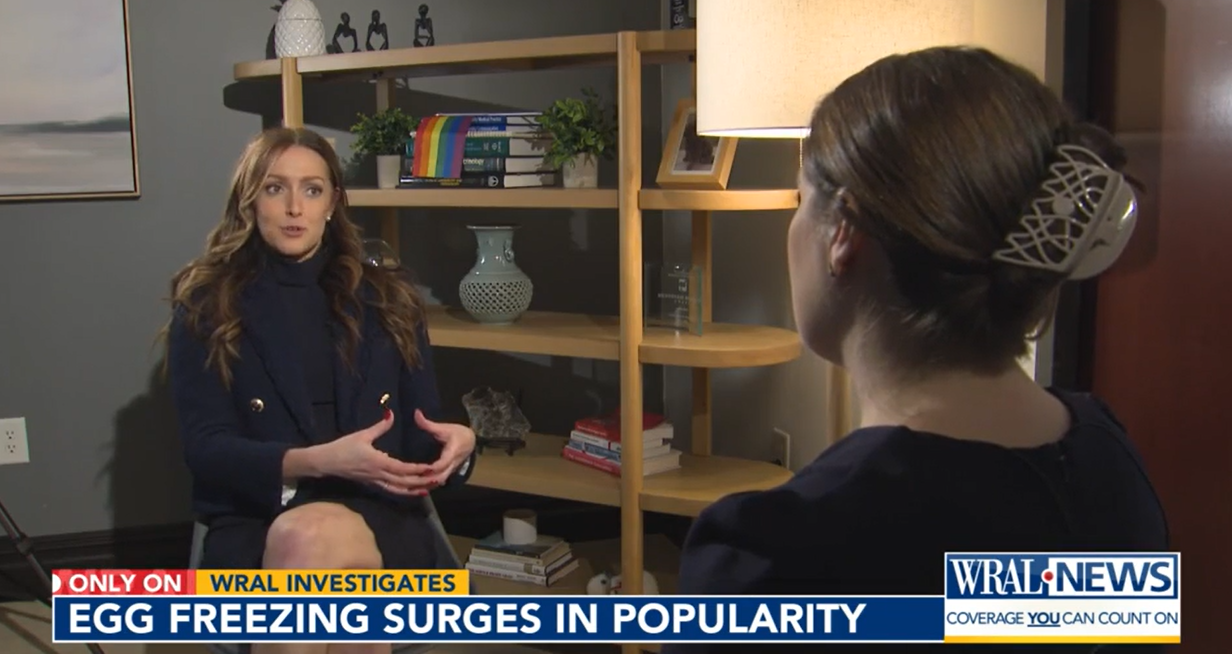For those who struggle to accomplish the common experience of pregnancy, the hand they’re played by life seems stacked against them. That’s just how it felt for Sally and her husband.
The couple knew they would encounter some challenges getting pregnant. First, there was the fact that Sally’s husband had a voluntary contraceptive vasectomy following the birth of his second child from a previous marriage. Accordingly, he underwent a surgical vasectomy reversal. Four months later, with a lot of cycle charting to confirm Sally was ovulating like clockwork, they learned that the vas reversal was unsuccessful.
They were diagnosed with male-factor infertility.
Wasting no time, the couple headed straight for IVF at a clinic near their home in Pennsylvania. Sally had chosen the clinic because of their overall success statistics. She conceived during the first IVF attempt, but miscarried early in the pregnancy. A second IVF cycle, another early miscarriage, and genetic testing revealed that Sally has what is known as a balanced translocation.
Now, they were dealing with male and female factors that would stand in the way of their creating the child they longed to have.
Balanced translocation (BT) refers to a condition in which parts of chromosomes are misarranged. In Sally’s case, her 9th and 16th chromosomes are switched. BT doesn’t usually result in any malformations for the carrier (in this case, Sally, and also her mother, it was learned when her parents were tested, too,) but BT often results in embryos that are not viable, therefore, in pregnancies that end in early miscarriage.
“It was so disheartening,” Sally recalls. “When I first started charting my cycle and before we found out the vasectomy reversal hadn’t worked, we felt very positive about getting pregnant.” Now, with the knowledge that she had a genetic condition that could result in further miscarriages, the task of getting pregnant seemed, well, like a test.
The Things We’ll Do
Through an Internet group for others with balanced translocations, Sally started exploring their options for treatment. Preimplantation Genetic Diagnosis (PGD) sounded promising, but her fertility specialist didn’t feel the technology was solid enough to warrant the extra expense of the procedure for the couple. He recommended continuing IVF with “aggressive transfers of lots of embryos” to boost Sally’s chances at creating one good embryo.
PGD is performed as a part of an In Vitro Fertilization cycle where multiple eggs are produced, retrieved from the ovaries and fertilized. At their earliest stage of development, one or two cells are removed from each embryo and analyzed in the PGD Laboratory to determine which embryos are free of genetic abnormalities.
Ironically, though Sally’s field of employment was Human Resources and benefits, the couple had no insurance coverage for infertility because her husband’s vasectomy was voluntary. Without PGD, they were looking down a long, expensive road of paying entirely out of pocket for what amounted to taking blind chances at getting around her genetic situation. With PGD, they could at least be able to tell if the embryos they were creating were normal before transferring them into Sally’s uterus.
Then a friend who was knowledgeable about BT suggested they look into Shady Grove Fertility, even though the nearest office was over two and a half hours away.
“She insisted I see Dr. Michael Levy,” remarks Sally. “And I couldn’t believe the difference in atmosphere between my previous clinic and Shady Grove Fertility. It was like night and day in terms of personal attention. I loved my previous RE, too, but I didn’t like the system. When we started at Shady Grove Fertility, one of the first things I noticed was that when I called, I talked to real staff — not voicemails — and later on, I always knew which individuals to speak with along the way in our treatment.”
“People who knew me at the time, but especially those who’d never gone through what he had, were asking me if I was crazy, deciding to make that drive. I didn’t expect them to understand.”
The Things It Takes To Move Forward
With renewed hope, Sally and her husband proceeded to a third IVF cycle, first at SGFC, this time using PGD to help select the right, healthy embryos to transfer.
The diagnosis of BT made them ineligible for the Shady Grove Shared Risk Refund Program, but Dr. Levy helped the couple by providing their services at a discounted rate. Calling it “such a blessing,” Sally now says that without the personalized financial assistance, plus the use of Capital One’s health care financing program, they “couldn’t have even considered going forward with treatment.”
To say they were disappointed when yet another pregnancy ended in miscarriage is an understatement.
“By now, we thought we were doing every possible thing right,” Sally says. “There was no definitive reason found for that loss.” Still they persevered and tried again.
In their fourth attempt at having a baby with IVF, their second using PGD, three healthy-appearing embryos were transferred and, again, Sally was pregnant. This time, to counteract a possible mild clotting problem, she used the injectable blood-thinner Lovenox to increase the likelihood of this pregnancy succeeding.
One of the three embryos implanted and stuck around for 37 relatively and happily uneventful weeks, at which time Sally’s first child was born in early 2008.
“I remember Dr. Levy remarking that one of the embryos looked ‘like it should be in a textbook’, it was so perfect,” the proud mother smiles. No longer working outside her home, Sally says, “We tried and tried so hard to have this little guy, I’m going to just be a mom and enjoy him.”





